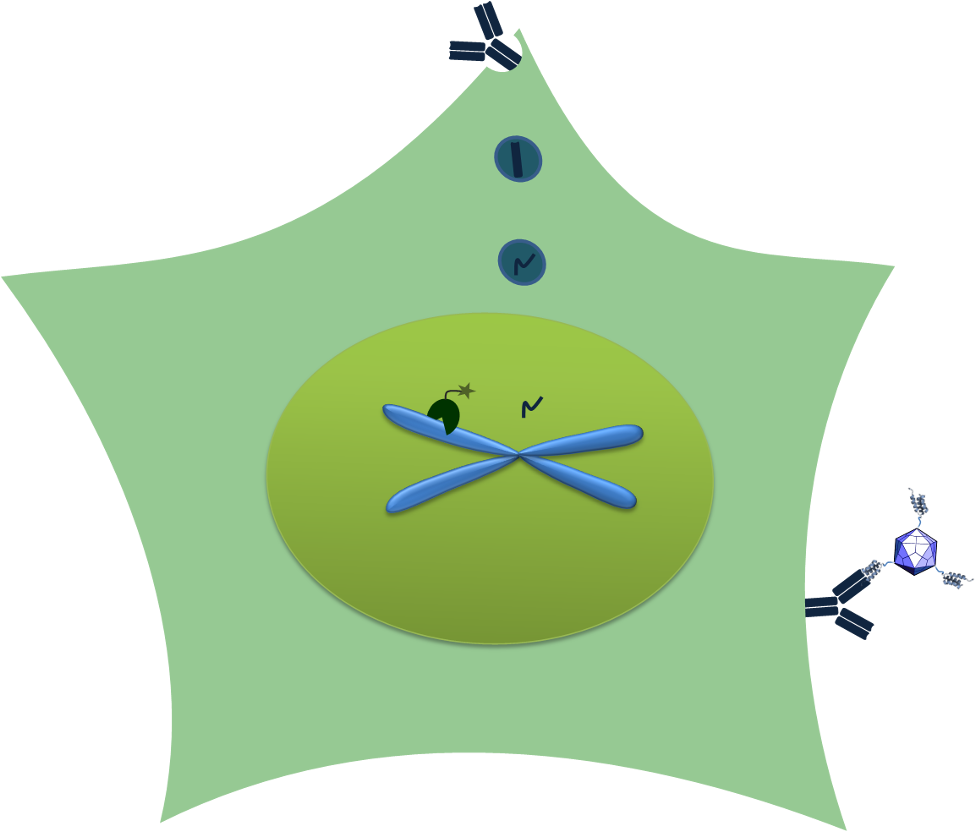Team:Potsdam Bioware/Biobricks/Overview
From 2012.igem.org
(Difference between revisions)
(→Favorite Biobricks) |
(→Biobricks) |
||
| Line 35: | Line 35: | ||
<tr> | <tr> | ||
| - | <td>[http://partsregistry.org/Part: | + | <td>[http://partsregistry.org/Part:BBa_K929301 BBa_K929301]<br> |
| - | ''' | + | '''Potsdam Standard Backbone'''<br> |
| - | + | Potsdam Standard | |
| + | </td> | ||
| + | <td> [[Image:UP12_BBa_K929003_smaloverview.png|right|400px]] This part is an improved version of wildtype AID, the enzyme that randomly mutates predominantly in the immunoglobulin genes. It is designed for strong expression of the fusion protein modified AID+eGFP. Modified AID has an additional Nuclear Localization Sequence (NLS)and the naturally occurring Nuclear Export Sequence (NES)is deleted. Due to the fact that AID mutates the actively transcribed single stranded DNA, it is supposed that the direction of the enzyme to the inside of the nucleus would improve the mutation rate.The fusion with the green fluorescent reporter eGFP allows 1.)to check the transfection success 2.)select transfected cells via FACS and 3.)to check the cellular localization of the fusion protein. For detailed information see the [http://partsregistry.org/Part:BBa_K929003 partsregistry], for experimental experience also see [https://2012.igem.org/Team:Potsdam_Bioware/Biobricks/All_Biobricks All Biobricks]. | ||
| + | </td> | ||
| + | </tr> | ||
| + | |||
| + | <tr> | ||
| + | <td>[http://partsregistry.org/Part:BBa_K929301 BBa_K929301]<br> | ||
| + | '''Potsdam Standard Backbone'''<br> | ||
| + | Potsdam Standard | ||
</td> | </td> | ||
<td> [[Image:UP12_BBa_K929003_smaloverview.png|right|400px]] This part is an improved version of wildtype AID, the enzyme that randomly mutates predominantly in the immunoglobulin genes. It is designed for strong expression of the fusion protein modified AID+eGFP. Modified AID has an additional Nuclear Localization Sequence (NLS)and the naturally occurring Nuclear Export Sequence (NES)is deleted. Due to the fact that AID mutates the actively transcribed single stranded DNA, it is supposed that the direction of the enzyme to the inside of the nucleus would improve the mutation rate.The fusion with the green fluorescent reporter eGFP allows 1.)to check the transfection success 2.)select transfected cells via FACS and 3.)to check the cellular localization of the fusion protein. For detailed information see the [http://partsregistry.org/Part:BBa_K929003 partsregistry], for experimental experience also see [https://2012.igem.org/Team:Potsdam_Bioware/Biobricks/All_Biobricks All Biobricks]. | <td> [[Image:UP12_BBa_K929003_smaloverview.png|right|400px]] This part is an improved version of wildtype AID, the enzyme that randomly mutates predominantly in the immunoglobulin genes. It is designed for strong expression of the fusion protein modified AID+eGFP. Modified AID has an additional Nuclear Localization Sequence (NLS)and the naturally occurring Nuclear Export Sequence (NES)is deleted. Due to the fact that AID mutates the actively transcribed single stranded DNA, it is supposed that the direction of the enzyme to the inside of the nucleus would improve the mutation rate.The fusion with the green fluorescent reporter eGFP allows 1.)to check the transfection success 2.)select transfected cells via FACS and 3.)to check the cellular localization of the fusion protein. For detailed information see the [http://partsregistry.org/Part:BBa_K929003 partsregistry], for experimental experience also see [https://2012.igem.org/Team:Potsdam_Bioware/Biobricks/All_Biobricks All Biobricks]. | ||
Revision as of 18:33, 26 September 2012
Biobricks
Overview
Favorite Biobricks
| BBa_K929003 modified AID with CMV, hGH-polyA and eGFP |
This part is an improved version of wildtype AID, the enzyme that randomly mutates predominantly in the immunoglobulin genes. It is designed for strong expression of the fusion protein modified AID+eGFP. Modified AID has an additional Nuclear Localization Sequence (NLS)and the naturally occurring Nuclear Export Sequence (NES)is deleted. Due to the fact that AID mutates the actively transcribed single stranded DNA, it is supposed that the direction of the enzyme to the inside of the nucleus would improve the mutation rate.The fusion with the green fluorescent reporter eGFP allows 1.)to check the transfection success 2.)select transfected cells via FACS and 3.)to check the cellular localization of the fusion protein. For detailed information see the partsregistry, for experimental experience also see All Biobricks. |
| BBa_K929301 Potsdam Standard Backbone |
This part is an improved version of wildtype AID, the enzyme that randomly mutates predominantly in the immunoglobulin genes. It is designed for strong expression of the fusion protein modified AID+eGFP. Modified AID has an additional Nuclear Localization Sequence (NLS)and the naturally occurring Nuclear Export Sequence (NES)is deleted. Due to the fact that AID mutates the actively transcribed single stranded DNA, it is supposed that the direction of the enzyme to the inside of the nucleus would improve the mutation rate.The fusion with the green fluorescent reporter eGFP allows 1.)to check the transfection success 2.)select transfected cells via FACS and 3.)to check the cellular localization of the fusion protein. For detailed information see the partsregistry, for experimental experience also see All Biobricks. |
| BBa_K929301 Potsdam Standard Backbone |
This part is an improved version of wildtype AID, the enzyme that randomly mutates predominantly in the immunoglobulin genes. It is designed for strong expression of the fusion protein modified AID+eGFP. Modified AID has an additional Nuclear Localization Sequence (NLS)and the naturally occurring Nuclear Export Sequence (NES)is deleted. Due to the fact that AID mutates the actively transcribed single stranded DNA, it is supposed that the direction of the enzyme to the inside of the nucleus would improve the mutation rate.The fusion with the green fluorescent reporter eGFP allows 1.)to check the transfection success 2.)select transfected cells via FACS and 3.)to check the cellular localization of the fusion protein. For detailed information see the partsregistry, for experimental experience also see All Biobricks. |
 "
"







